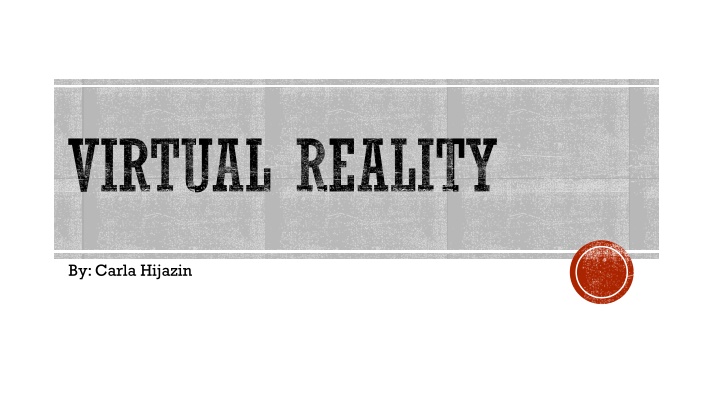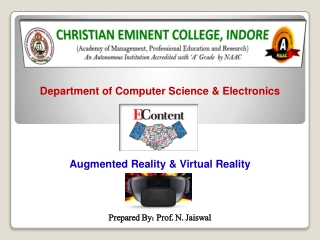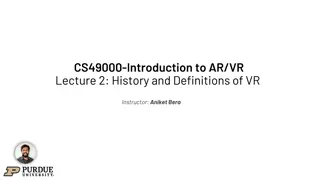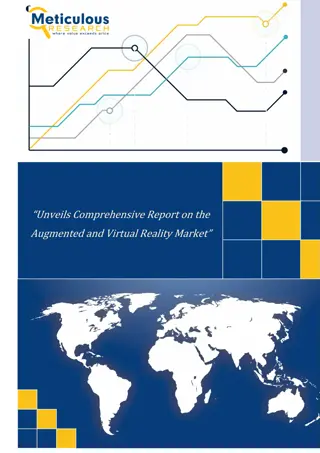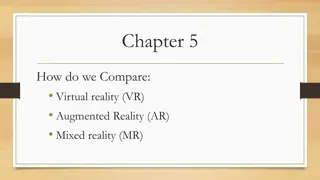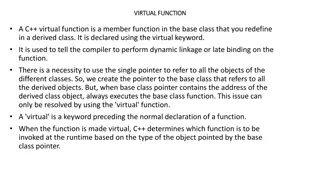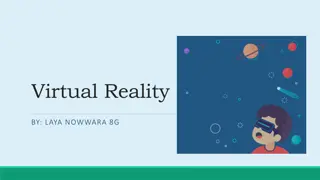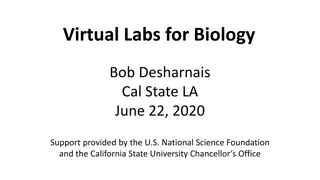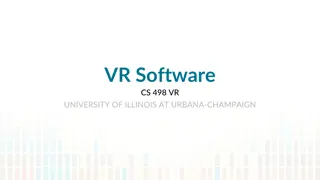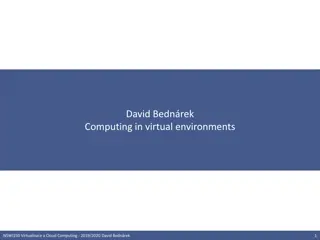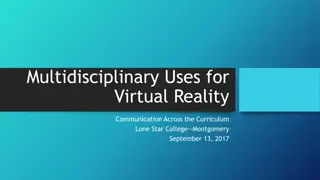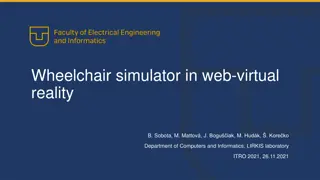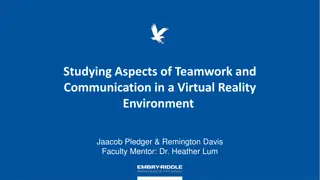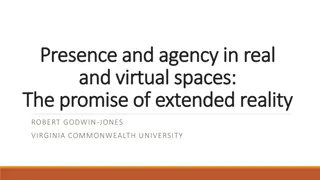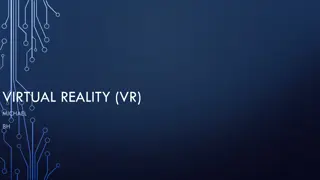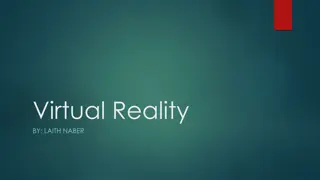Understanding Virtual Reality: Advantages, Disadvantages & Applications
Virtual reality (VR) offers a simulated 3D environment allowing users to explore, learn, and interact in various fields such as education, healthcare, and real estate. Discover the benefits, drawbacks, and versatile applications of VR in different sectors.
Download Presentation

Please find below an Image/Link to download the presentation.
The content on the website is provided AS IS for your information and personal use only. It may not be sold, licensed, or shared on other websites without obtaining consent from the author.If you encounter any issues during the download, it is possible that the publisher has removed the file from their server.
You are allowed to download the files provided on this website for personal or commercial use, subject to the condition that they are used lawfully. All files are the property of their respective owners.
The content on the website is provided AS IS for your information and personal use only. It may not be sold, licensed, or shared on other websites without obtaining consent from the author.
E N D
Presentation Transcript
VIRTUAL REALITY By: Carla Hijazin
WHAT IS VIRTUAL REALITY? Virtual reality is a simulated 3D environment called virtual reality allows users to explore and interact with a virtual environment in a fashion that simulates reality as it is experienced by the users' senses.
WHAT IS VIRTUAL REALITY USED FOR? Virtual reality is used for many things other than gaming. Such as:- Training: people can train for their jobs using a VR headset as a practice as if they are working on their jobs in real life. Travel: this could be used when hotels take u inside their property so you know what to expect as your room and the hotel itself. Real Estate: developers can move beyond 3D models to simulate life inside their new development. Healthcare: It would be invaluable in medical school to help students learn how to deal with situations that may arise when they become doctors. And way more
ADVANTAGES OF VIRTUAL REALITY IN EDUCATION Increase memory power and knowledge retention. Boost excitement and engagement in the classroom. Improve learning outcomes. Focus student attention on the lesson. Open up new opportunities and create accessibility for every student. Improve understanding of complex, conceptual subjects. Build emotional intelligence, awareness and understanding. Improve communication and collaboration skills.
DISADVANTAGES OF VIRTUAL REALITY IN EDUCATION A lack of real communication:The traditional education is based on personal human interaction. A lack of flexibility:Though VR allows for studying various aspects, it s not as flexible as it should be. The issue of addiction: Like most technological inventions, VR may contribute to the development of addiction
HOW DID VIRTUAL REALITY HELP? Virtual reality has helped in many things. Like education for people who want to be a doctor or construction workers wanting to know how high they will be or how hard. Moreover, hotels can give people a clear view of the hotel so they know what they are expecting. On the other hand, it may have disadvantages which can possibly damage them but it also has many advantages.
SOURCES https://www.classvr.com/blog/advantages-of-virtual-reality-in- education/#:~:text=So%2C%20in%20summary%20virtual%20reality,skills%20ne eded%20for%20the%20future. https://www.marxentlabs.com/what-is-virtual-reality/ https://www.techtarget.com/whatis/definition/virtual- reality#:~:text=Virtual%20reality%20is%20a%20simulated,perceived%20through %20the%20users%27%20senses. https://edubirdie.com/examples/major-advantages-and-disadvantages-of-using- virtual-reality-in-education/
